Good Morning
Kalgoorlie!
Low 5°c (41°F) – High 22°c (72°F)
Another cold morning and despite knowing we had a pretty big day ahead
of us, we got ourselves organized and out of the park just before 9.30am. Heading north once again we found ourselves
surrounded by vivid red dirt and a real sense of being right back in the
outback. I don’t know exactly what it
is, but both of us respond so strongly to the outback in a very “connected”
way, it has felt so good to leave the pastures and large cities behind us.
We always get a bit of a laugh at some of the signs during our travels –
a more recent one has included Kangaroos (great big ones if perspective counts
for anything) jumping over Cows. We are
yet to see this phenomenon and our trip is the poorer for it.
Various mine sites are all along the Goldfields Highway and we passed
many road trains and also vehicles transporting mining vehicles and equipment,
possibly more than we’ve seen in past days in this short space of time. Our overnight destination for today was a
little town called Menzies, 135km from Kalgoorlie, which has a super Council
run Caravan Park possibly one of the neatest and easy access parks we’ve stayed
in and with power and water for $30 it was pretty good value. After arriving in Menzies just after 11.00am,
getting set up and having a bite to eat, we set off for another 105km to where
our attention lay for today – a little ghost town called Gwalia.
Located on the edge of the Great Victoria Desert, the long-abandoned
town of Gwalia stands testament to the booms and busts of the gold rush era.
Standing in the shadow of what is still one of Australia’s most prosperous gold
mines, Gwalia’s heyday came to an abrupt end in 1963, when the closure of the
mine led to the town becoming all-but-deserted overnight with residents grabbing
what they could carry, jumping on the train and waving goodbye to the dusty red
streets forever.
Gwalia’s story dates way back to 1896, when three prospectors hit the
jackpot and found gold in this remote region during the height of Western
Australia’s gold rush. Word quickly got out, and by 1897 there was a fully
operating mine on the site, named “Sons of Gwalia”. Before long, the town caught the eye of
up-and-coming young American geologist – and future 31st US
president – Herbert Hoover, who travelled up by camel from Coolgardie, 274km
(170mi) to the south. Convincing his
bosses in London to invest in the mine, Hoover was soon appointed manager and
applied radical cost-cutting schemes that put the Sons of Gwalia on course to
be one of Western Australia’s most profitable gold mines.
As the mine and workforce grew, so too did Gwalia. At its peak, the
town was home to 1,114 people, most living in tumble-down cottages built from
corrugated iron and timber, or taking up lodgings in temporary boarding houses
for single men. They would shop in one of the town’s two stores, go to church,
send their kids to school and drink in the Gwalia State Hotel, one of the few
brick buildings in the town.
Although the Sons of Gwalia was one of the most profitable mines in
Australia at the time, producing over 2.644 million ounces (75 million grams)
of gold (worth roughly AU$3.5 billion in today’s prices), by the late 1950s the
tides of change had turned against the town.
On the night of 27 December 1963, it all came to an abrupt end when a
serious accident caused the mine to shut down. With thousands of workers instantly
unemployed, the race was on to rush home, grab whatever they could carry on
their backs and catch the train to Kalgoorlie to find work. In their haste, everything else was forgotten:
pots and pans left on the stove, tables set for a meal that would never be
served and long-loved toys strewn over the floor. By morning, the dusty streets
were eerily empty, and the flimsy houses that had once been so full of life were
silent.
In just three weeks, the population dwindled from more than a thousand
to just 40, and the hotel shut its doors for the last time. Gwalia became a
living ghost town. In the 1970s, the
government moved in to demolish the town, with Gwalia’s story destined to be
lost to time like so many others in the area. Realising the historical importance of the
town, however, the few remaining residents banded together and campaigned to
stop the demolition. Collecting snippets
of history, from photographs and newspaper clippings to old vehicles, mining
equipment and family tidbits, they pieced together the story of Gwalia,
spending the next few decades converting the old administration buildings into
a museum, restoring the rusted tin-shed cottages through an “Adopt-a-Cottage”
program and turning Herbert Hoover’s former mine manager’s house into a luxury
1930s-style B&B.
Despite the evacuation of the town, there was still a lot of interest
in the Sons of Gwalia mine and the gold that lay beneath the surface, and so,
after 20 years of lying dormant, in 1983, the mine was reopened. Still in operation today, the mine is now the
deepest trucking mine in the world, and, since its discovery in 1896, has
produced over 5.5 million ounces (156 million grams) of gold – worth over AU$13.7
billion – making it one of the richest gold mines in Australia’s history. Today, Gwalia’s streets are still as empty as
they were on that fateful morning in 1963 – bar the occasional tourist, the odd
mining ute and the wild goats that now call this town home.
Gates made of old metal headboards, rooms wallpapered with hessian
sacks and old newspapers, workshops with rusting car parts and tools, smokey
kitchens and pressed metal ceilings and wall panels, you get a real taste of
what life would have been like for the miners and their families here at the
time. We had to wonder what it would
have been like in the heat of summer as the area has an arid climate, with
very hot summers and cool winters and having recorded temperatures up to 49°c (120°F). Rainfall is very sparse but there still would
have been many nights huddled round the wood stove and pots catching the drips
of rain from a leaking roof. We enjoyed
a good hour and a half wandering around and through all the cottages and sheds
before heading a little further north to the town of Leonora.
The first European explorer to visit the area (in 1869) was the
same John Forrest who would become WA’s first Premier 21 years later. On
21 June 1869 Forrest's party made camp near a conspicuous hill, which Forrest
named Mount Leonora, after his six-year-old niece Frances (Fanny) Leonora
Hardey. In 1895, gold was discovered in the area by prospector
Edward "Doodah" Sullivan at the Johannesburg lease just north of the
current townsite. In the following two years a number of rich finds resulted in
rapid development of the area. The Sons of Gwalia gold mine brought
Leonora to the attention of the world. By
1897 a residential and business area had been established, and the town was
gazetted as Leonora. Fast forward to modern day Leonora which was home to a
detention centre, for asylum seekers relocated from Christmas Island, for four
years from 2010.
Heading back to Menzies we stopped off at Lake Raeside which is part of
a larger lake system that begins north of Leonora near Sir Samuel at Lake Miranda
and extends south-east to Lake Goddard – a distance of over 800km. The lake is generally dry, covered with a
thin film of salt and has features typical of the area. During extreme
rainfall, the lake can be transformed into a flowing waterway and takes on the
dynamic characteristics of a real river.
We also stopped to photograph a huge rock that some clever person had
painted to look like a giant frog as well as a few other sights on our way back
to the van where we were treated to an amazing outback sunset. Peeking out between some buildings in the
park was the clock tower, the warm colours and textures provided by the
stonework really stood out in the rich light of the sunset. The tower belongs to the Town Hall & Shire
Office with the first section of the building built in 1896 and an extension
added in 1900/01 to include Council Chambers, administration offices, public
library & reading room with a town hall located at the rear of the building.
A clock however was missing for many years as a clock for the tower was sent
out from England via S.S. "Orizaba" in 1905. Unfortunately Orizaba
sank off the Coast of Rottnest Island. Eventually a clock was installed in the
tower and unveiled on 1st January 2000.
It was warm enough to have Kitty’s pen set up
and she was most happy to be able to sit outside with Shane. Unfortunately a few friendly mosquitoes
gathered quite early so I decided not to join them, preferring to sit inside
with the insect screen closed and keep my blood to myself.
Low 5°c (41°F) – High 22°c (72°F)
%20map.jpg)
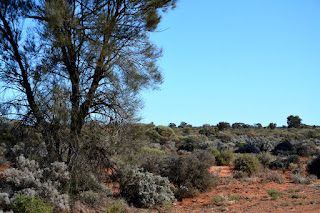

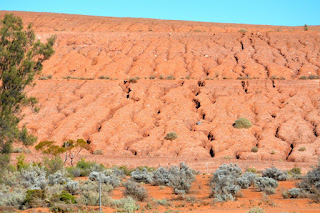
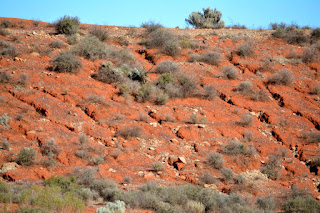





























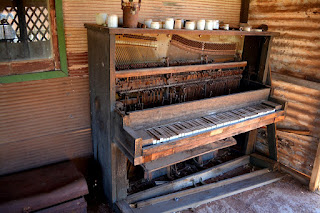











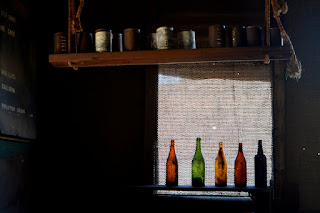

























No comments:
Post a Comment